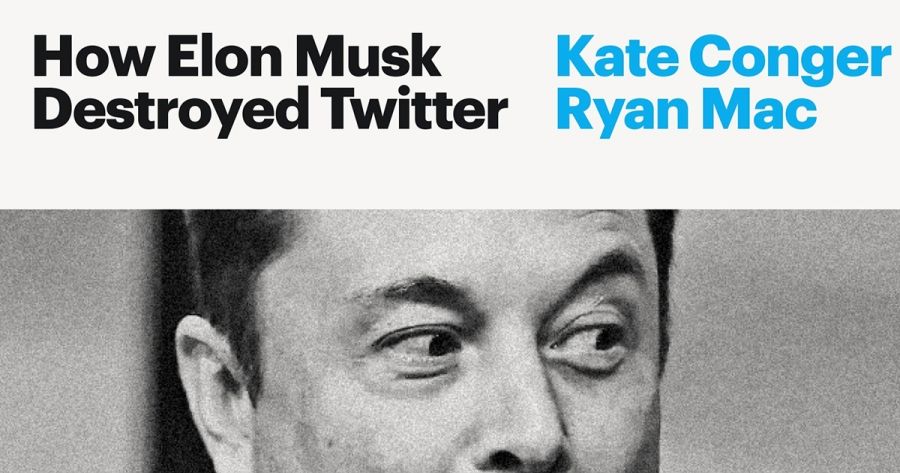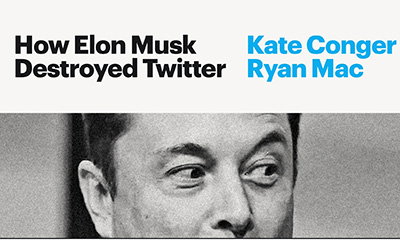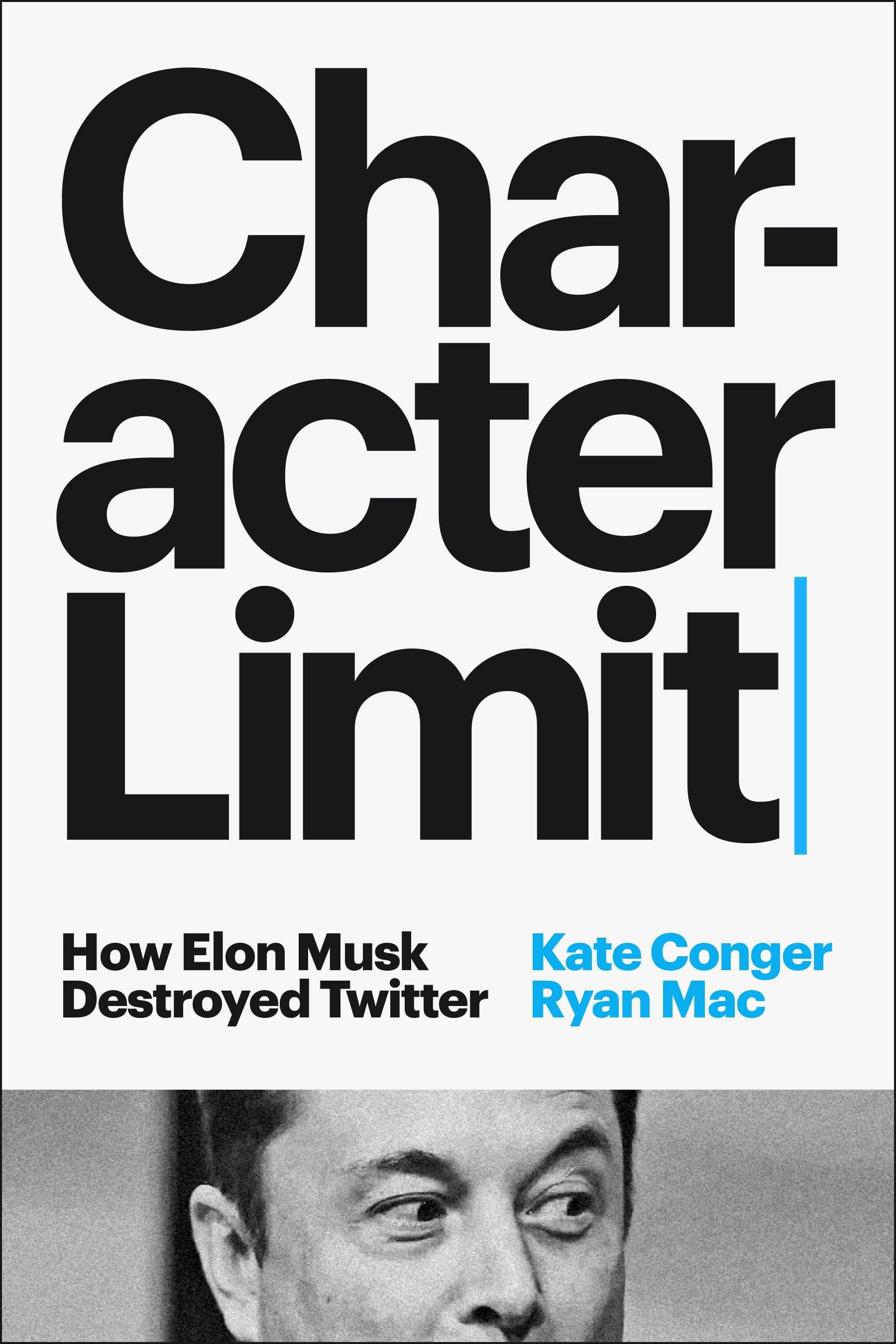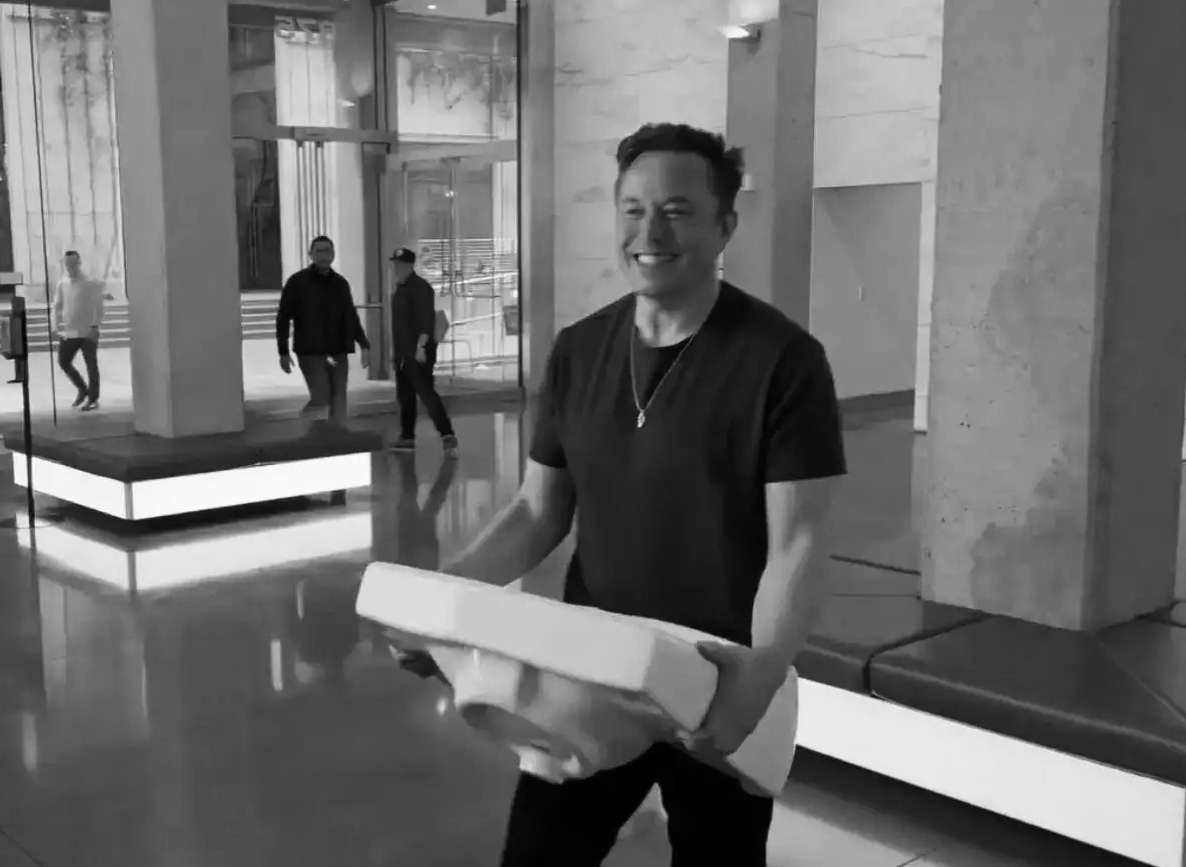
- Free Article: No
- Contents Category: Media
- Review Article: Yes
- Article Title: ‘Let That Sink In!’
- Article Subtitle: Fantasy without consequence at Twitter
- Online Only: No
- Custom Highlight Text:
On 26 October 2022, two days before closing a deal to purchase Twitter for US$44 billion (A$61.4 billion), Elon Musk walked into its San Francisco headquarters carrying a white porcelain sink. He walked up to an unattended front desk in the lobby and said, to no one: ‘You can’t help but let that sink in.’ Of course, he didn’t really say this to no one. His triumphant entrance at Twitter HQ was staged, the video shared with his 120 million Twitter followers, with the phrase: ‘Let That Sink In!’
- Featured Image (400px * 250px):

- Alt Tag (Featured Image): Matthew Lamb reviews ‘Character Limit: How Elon Musk destroyed Twitter’ by Kate Conger and Ryan Mac
- Book 1 Title: Character Limit
- Book 1 Subtitle: How Elon Musk destroyed Twitter
- Book 1 Biblio: Cornerstone Press, $36.99 pb, 468 pp
- Book 1 Cover Small (400 x 600):

- Book 1 Cover (800 x 1200):

- Book 1 Readings Link: https://www.readings.com.au/product/9781529914702/character-limit--kate-conger-ryan-mac--2024--9781529914702#rac:jokjjzr6ly9m
The authors explain that this staged entrance didn’t even take place in the main office, but in a side building, which is why the foyer desk was unattended. Far from being the actual moment of entry, Musk had already been greeted outside by Twitter’s CEO, Parag Agrawal, who had to wait patiently out of shot, while Musk played out his stunt before being taken into the main office to meet a handful of Twitter’s 7,500 staff, the majority of whom were scattered around the globe. Within months, half that number would be sacked.
This is one moment among many outlined in Character Limit: How Elon Musk destroyed Twitter, each of which demonstrates how Musk favours the virtual over the physical world, unreality over the real, fantasy without consequence.
 Elon Musk at Twitter HQ, 2022 (Via X)
Elon Musk at Twitter HQ, 2022 (Via X)
The central insight in the book comes when Esther Crawford, director of product management, finally realises that Musk’s limited experience and narrow expertise in running his other companies didn’t translate into understanding or being able to make competent business decisions at Twitter. ‘At its core, SpaceX was a physics problem. Tesla was a manufacturing challenge,’ the authors explain. ‘But Twitter was a social and psychological problem.’ And Musk failed to understand or empathise with other human beings.
For example, before and after purchasing the company, Musk had become convinced, without evidence, that there were significantly more bots on the site than the five per cent figure that the Twitter engineers had assessed. Many of Musk’s disastrous decisions early on, such as wanting users to pay to use the service, were predicated upon rooting out these fake accounts. Such paranoia also extended to questioning the existence of his employees. ‘His fears that Twitter couldn’t discern between its human and bot users had mutated into the notion that the company couldn’t keep track of its employees,’ the authors state. ‘In meetings, he fretted about what he called “ghost employees” who might be collecting paychecks from the company without earning them. Before Twitter sent out any payments, it needed to conduct an audit to ensure its employees were real.’
Such examples multiply, punctuating the narrative with embarrassing regularity. The authors were able to provide details for such moments because, both being award-winning investigative journalists, they had spent years reporting on Twitter, on Musk, and on the inner workings of the takeover deal as it happened. They drew on hundreds of additional interviews with key players, many of whom kept detailed notes on their meetings and interactions, with each other, and with Musk himself, his family, and his entourage. Text messages, emails, and internal office recordings were also shared with the authors. They had access to court transcripts and discovery evidence relating to the court case when Musk attempted, and failed, to withdraw from the deal.
This accumulated material means that the authors are able to place the reader inside the board room, as decisions were being made, but also in the middle of private discussions, and even – by using data from a Twitter account that tracked Musk’s air travel in real time – right inside his private jet.
This blow-by-blow account is fascinating in the same way that watching a car wreck in slow motion can be fascinating. But this insider account also has some unintended consequences. The more we are pulled into the bubble, the more the narrative comes to resemble the solipsism of its protagonists. On the rare occasion when reality does make a fleeting appearance – the murder of George Floyd, a global pandemic, the war in Ukraine – it is only in reference to its effect on Twitter’s advertisers and on the logistical and technical problems of content moderation – a minor peripheral irritant, a distraction from the melodrama of ‘the showdown’ between Musk and everybody else.
Although critical of Musk – his excesses and poor decision-making abilities – and not shy of pointing out the personal shortcomings of various investors, lawyers, engineers, and board members, this narrative insularity operates by focusing on individuals transacting with one another without a broader social, political, or institutional context. It leaves intact the underlying origin story of the entrepreneur as genius, self-generating and all-conquering, even if their genius is flawed, their reign prone to hubris. This only makes the narrative all the more compelling, like A Game of Thrones for Tech Bros.
The problem is that it isn’t entirely true. In telling Musk’s backstory, and the early period of Tesla, for example, the authors point out that the electric vehicle company did benefit from a billion-dollar government contract when the company needed it most. But that’s not the whole story. As Mariana Mazzucato detailed in her 2015 revised edition of The Entrepreneurial State, Tesla Motors, while still a fledgling company, benefited from a $US465 million publicly funded guaranteed loan from the US Department of Energy. More remarkably, all of Musk’s companies – Tesla, SolarCity, and SpaceX – have piggybacked off technologies that they themselves had not invented – batteries, solar panels, and rocket technologies – which were the product of direct investments, research and development, facilitated by the US Department of Energy and NASA.
‘Tesla Motors, SolarCity and SpaceX, all led by entrepreneur Elon Musk, are currently surfing a new wave of state technology,’ Mazzucato wrote nearly ten years ago. ‘Together, these high-tech ventures have benefited from $4.9 billion in local, state and federal government support, such as grants, tax breaks, investments in factory construction and subsidized loans. The State also forges demand – creates the market – for their products by granting tax credits and rebates to consumers for solar panels and electric vehicles and by contracting $5.5 billion worth of procurement contracts with SpaceX and $5.5 billion for the National Aeronautics and Space Administration (NASA) and the US Air Force ... But all we hear in the media is the one-sided myth of the lone entrepreneur.’
In early 2022, after converting such public funding and state-based R & D into personal wealth, when Musk toyed with Twitter on his iPhone, he was, along with millions of other users, deploying technologies that had their origins not in the singular genius of Steve Jobs (Apple) or Jack Dorsey (Twitter) but in the US Defence Advanced Research Project Agency in the 1950s, among other publicly funded facilities since. In reality, Bezos, Dorsey, Gates, Jobs, Musk, and Zuckerberg are all very small men standing on the shoulders of a very large state apparatus. Everything, from the internet itself to the Graphical User Inter-face upon which Apple and Microsoft operate, to the touch screens we constantly thumb, have emerged from this publicly funded innovation. The ubiquity of social media platforms would have been impossible, for example, without WiFi, invented by the Australian CSIRO. When Musk acquired Twitter in 2022, he was acquiring this public legacy; and when he trashed Twitter (devolving it into X), it was this legacy he trashed.
It is impossible to consider Character Limit in the current moment without reading it against the 2024 US presidential election, Musk’s proximity to Donald Trump, and his appointment to a virtual Department of Government Efficiency. But it is difficult to comment on this book in relation to this particular moment, since it was published before the election, I read it soon after the election, and I have filed this review in the heady days of the transition. Who knows what will be happening when the review is published? Character Limit prefigures much of what to expect, however, and it is telling that when Trump won the election, Musk posted to X a photoshopped image of himself carrying a white porcelain sink into the Oval Office, cropped from his previous video, with the caption: ‘Let That Sink In!’


Comments powered by CComment